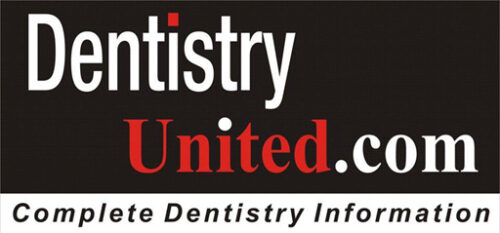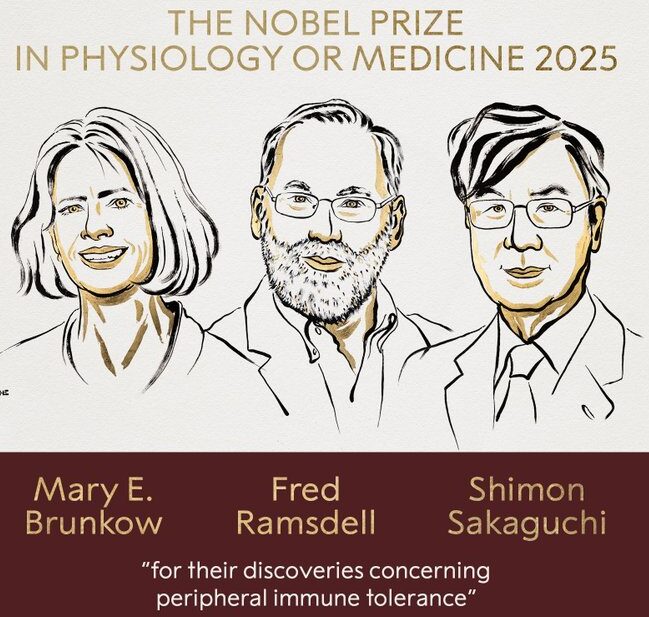From DentistryUnited NewsDesk:
The 2025 Nobel Prize in Physiology or Medicine has been awarded to Mary E. Brunkow, Fred Ramsdell, and Shimon Sakaguchi—a trio whose groundbreaking work on peripheral immune tolerance has redefined our understanding of the immune system. Their discoveries, spanning decades, have illuminated the intricate mechanisms that prevent the immune system from turning against the body’s own tissues, offering profound implications for autoimmune diseases, cancer therapies, and even dental practice.
For dentists, whose daily work intersects with immunology in the context of oral inflammation and systemic health, this Nobel Prize underscores the importance of foundational research in advancing clinical care. With a touch of humor drawn from the laureates’ own stories, this reflection explores their contributions and their relevance to dentistry, celebrating the unassuming brilliance of true scientific discovery.
The Science: Mastering Immune Tolerance
The immune system is a double-edged sword—capable of defending the body with remarkable precision while also harboring the potential to cause self-destruction if misdirected. Brunkow, Ramsdell, and Sakaguchi unraveled the enigma of peripheral immune tolerance, the process by which the immune system distinguishes self from non-self, preventing autoimmune attacks.
Sakaguchi’s seminal discovery in 1995 identified regulatory T cells (Tregs) as crucial sentinels that suppress overzealous immune responses. Later, Brunkow and Ramsdell’s breakthrough in 2001 pinpointed the genetic foundation of this mechanism through their studies of the “scurfy” mouse—a small rodent with a mutation that caused uncontrolled immune activity. By 2003, Sakaguchi synthesized these findings, establishing the pivotal role of Tregs in maintaining immune homeostasis.
For dentists, this is more than an academic triumph. The oral cavity is a constant battleground of microbial challenges and immune responses. Chronic inflammatory conditions such as periodontitis and oral lichen planus exemplify what happens when this balance falters. Understanding the role of Tregs opens doors to targeted therapies that could modulate oral inflammation, potentially reducing tissue destruction in periodontal disease or mitigating autoimmune conditions like Sjögren’s syndrome, which affects salivary glands.
The laureates’ work has spurred a generation of research into Treg-based therapies—some already in clinical trials—offering hope for future treatments that could transform how dentists manage chronic oral inflammatory diseases.
Implications for Dentistry: From Bench to Chairside
Dentists are acutely aware of the immune system’s role in maintaining oral health. Periodontal disease, for instance, arises from the complex interplay between microbial insult and an excessive host response, resulting in tissue breakdown. The discovery of Tregs suggests that therapeutic modulation—dampening harmful inflammation without broadly suppressing immunity—may one day be possible.
Imagine a future where biologic agents inspired by Treg pathways are applied locally into periodontal pockets to calm inflammation while preserving systemic immune balance. Such therapies could complement traditional scaling and root planing, offering hope for patients with persistent or refractory disease.
Beyond periodontitis, the implications extend to the oral-systemic connection. Autoimmune disorders such as rheumatoid arthritis and systemic lupus erythematosus share inflammatory pathways with oral conditions. Treg-based interventions could therefore improve both systemic and oral outcomes, reinforcing the notion that oral health is integral to total health.
For dental practitioners, staying informed about advances in immunology is no longer optional—it is essential. Understanding immune modulation will help clinicians make informed decisions when managing patients with complex medical histories or those undergoing immunotherapy.
The Human Side: A Grizzly Bear or a Nobel Prize?
Beyond the science lies the human charm of the Nobel laureates themselves. Fred Ramsdell learned of his Nobel win while hiking through the wilderness of Wyoming. His phone, set to airplane mode, buzzed to life only when his wife shouted urgently—he thought she had spotted a grizzly bear. Instead, she delivered the news: he had won the Nobel Prize. “I said, ‘I did not,’” Ramsdell recalled, laughing at his disbelief.
Mary Brunkow, meanwhile, dismissed a call from Sweden as spam, convinced the Nobel Committee had dialed the wrong number. These anecdotes capture the delightful humility of scientists driven by curiosity rather than fame.
Even the scurfy mouse—the unglamorous subject of decades of study—reminds us of how unassuming research can yield monumental insights. The mouse colony was quietly maintained at Oak Ridge National Laboratory for years before its true scientific value was recognized.
For dentists, these stories are a reminder that progress often comes from persistence, not prestige. Foundational research, whether in immunology or biomaterials, shapes the clinical tools and therapies that eventually reach our chairsides.
A Call to Action for Dental Professionals
The 2025 Nobel Prize in Medicine serves as a powerful call for dental professionals to engage more deeply with immunological science. Oral diseases are, at their core, immunoinflammatory disorders. Understanding immune regulation and tolerance can guide better management strategies and inspire innovation in preventive and therapeutic approaches.
Dental education should integrate immunology more comprehensively, preparing future dentists to interpret and apply emerging therapies. Collaborative research between dental scientists and immunologists could lead to the development of novel, locally delivered immune-modulating treatments for oral conditions such as aphthous ulcers, pemphigus vulgaris, and mucous membrane pemphigoid.
Furthermore, the laureates’ interdisciplinary journey—from academic discovery to biotech translation—provides a blueprint for dental research. Partnerships between dental schools, biotechnology firms, and clinical institutions could accelerate the translation of immunological breakthroughs into tangible dental therapies.
Conclusion: Celebrating Science, Inspiring Dentistry
The Nobel Prize awarded to Brunkow, Ramsdell, and Sakaguchi is a celebration of the power of curiosity-driven research. Their elucidation of peripheral immune tolerance has reshaped our understanding of disease and opened pathways for precision therapies. For dentistry, their discoveries underscore the immune system’s central role in oral health and disease and inspire a vision of biologically integrated treatment strategies.
From mistaking a Nobel announcement for a bear attack to screening unknown calls from Sweden, these scientists remind us that humility and dedication often precede greatness. Their work challenges dental professionals to look beyond the operatory—to embrace the science that underpins every aspect of oral health—and to let curiosity guide the next generation of discoveries.

